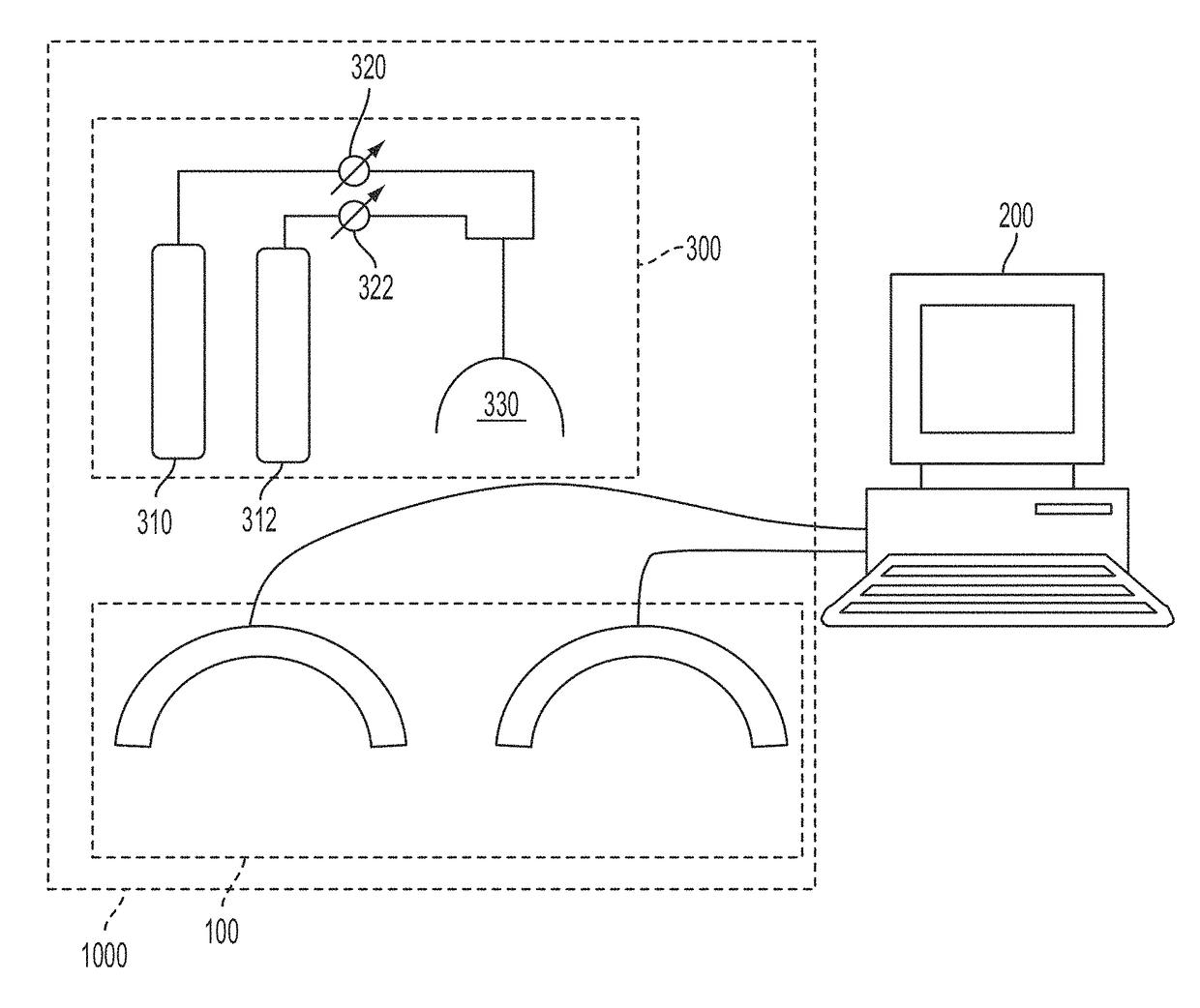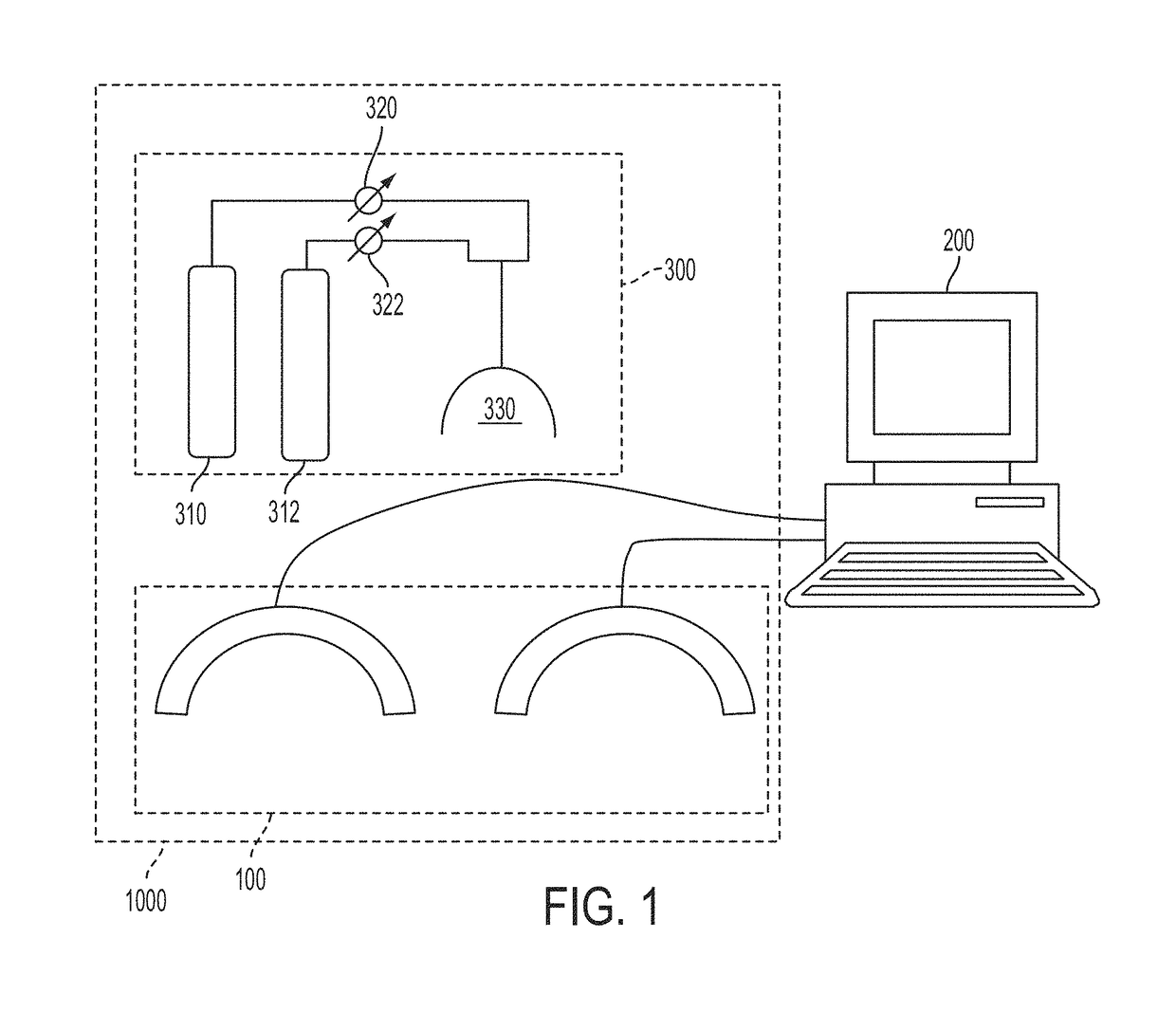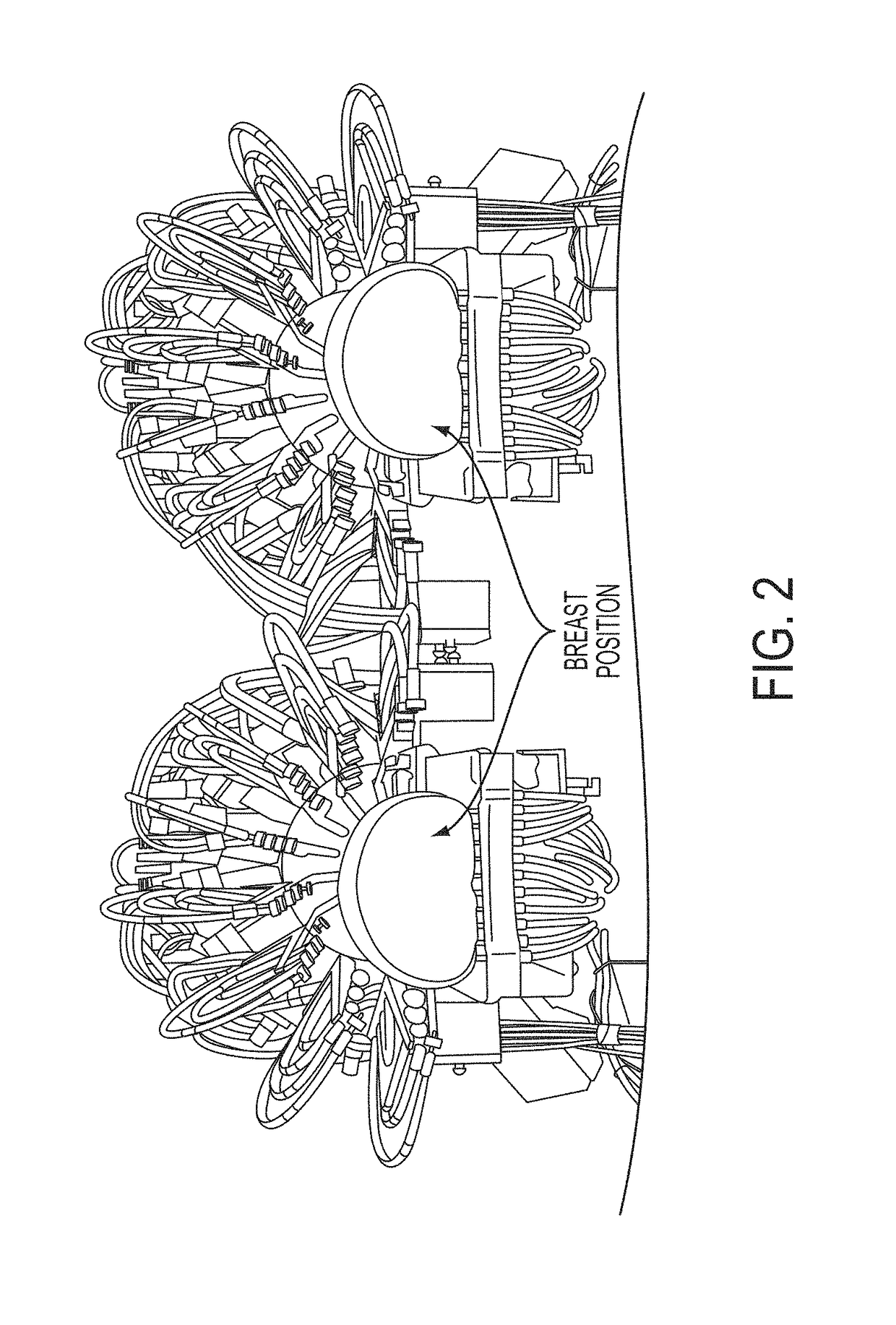Self-referencing optical measurement for breast cancer detection
a breast cancer and self-referencing technology, applied in the field of breast cancer detection optical measurement, can solve the problems of boundary value problems, difficult to solve in any stable way, hemoglobin signal disturbance, etc., and achieve the effect of high diagnostic sensitivity and easy implementation
- Summary
- Abstract
- Description
- Claims
- Application Information
AI Technical Summary
Benefits of technology
Problems solved by technology
Method used
Image
Examples
embodiment
Preferred Embodiment
1. Simultaneous Bilateral Breast Measures
[0043]Referring to FIG. 2, a dual sensing head apparatus is shown, which has been implemented in an effort to reduce sources of variance inherent to optical measures of the breast. The dual sensing head structure (1) provides for simultaneous bilateral measures, (2) serves to impose substantially bilaterally symmetric external boundary conditions by employing feedback-controlled articulation members that can adjust optode contact force to a desired value. A description of this setup and methods used to evaluate the hemoglobin signal are given in R. Alabdi, H. L. Graber, Y. Xu, and R. L. Barbour, “Optomechanical imaging system for breast cancer detection,”J. Optical Society of America A 28, 2473-2493 (2011). Briefly, each breast is illuminated in parallel with dense array of sources (760, 830 nm), in rapid succession, with a parallel recording of the emerging light intensity.
[0044]It is appreciated by those skilled in the a...
example 1
of Breast Cancer from Resting-State Measures
[0073]In general, the resting state dynamics of the hemoglobin signal in any tissue are affected by local metabolic and systemic control mechanisms. For many forms of cancer, it is also appreciated that up-regulation of enzyme pathways accompanies the various changes in gene expression. One pathway in particular that is frequently up-regulated is that involving the inducible form of nitric oxide synthase, also known as NOS II. Among its many actions, nitric oxide (NO) is a powerful vasodilator. Previous reports in the literature have identified that subjects with breast cancer experience enhanced modulation of the spontaneous low-frequency vascular rhythms, and that this behavior is sensitive to inhibitors of NOS II. See, for example, T. M. Button, H. Li, P. Fisher, R. Rosenblatt, K. Dulaimy, S. Li, B. O'Hea, M. Salvitti, V. Geronimo, C. Geronimo, S. Jambawalikar, P. Carvelli, and R. Weiss, “Dynamic infrared imaging for the detection of ma...
example 2
of Breast Cancer from an Evoked Response
[0090]To those skilled in the art, it can be appreciated that whereas there are many forms of evoked response that could be considered that may reveal, in some instances, some type of differential response in a breast containing a tumor (e.g., use of various respiratory gas mixtures, applied force maneuvers, Valsalva maneuver) all of the concerns identified above would still apply to the expected impact that the many sources of variance would have on the stability of derived biometrics. For instance, a simple maneuver easily implemented is an applied force to achieve some level of breast compression. A brief consideration, however, indicates that the response one might observe could be highly idiosyncratic and strongly dependent on a host of external boundary and internal constituent factors (e.g., breast stiffness). In the case where the goal is to extract non-observable features (e.g., a tomographic imaging study), the obvious change in brea...
PUM
 Login to View More
Login to View More Abstract
Description
Claims
Application Information
 Login to View More
Login to View More - R&D
- Intellectual Property
- Life Sciences
- Materials
- Tech Scout
- Unparalleled Data Quality
- Higher Quality Content
- 60% Fewer Hallucinations
Browse by: Latest US Patents, China's latest patents, Technical Efficacy Thesaurus, Application Domain, Technology Topic, Popular Technical Reports.
© 2025 PatSnap. All rights reserved.Legal|Privacy policy|Modern Slavery Act Transparency Statement|Sitemap|About US| Contact US: help@patsnap.com



